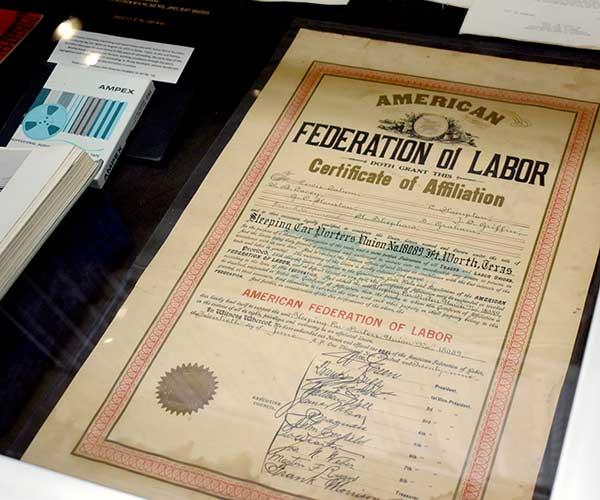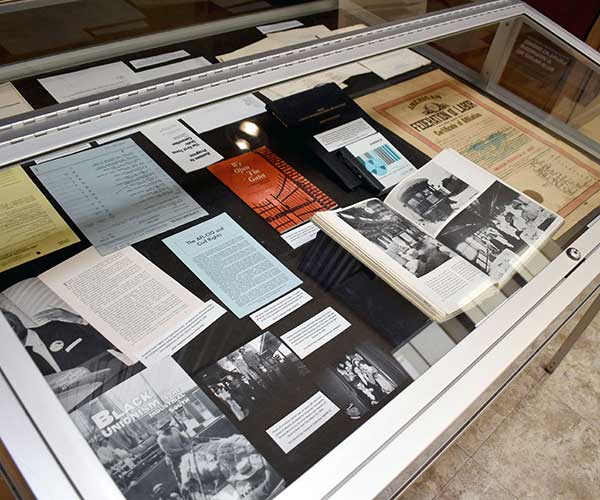
by Library News


by Library News
The contributions made by the Brotherhood of Sleeping Car Porters in advancing labor and civil rights are the focus of UTA Libraries Special Collections' latest mini-exhibit that opens Feb. 1. The monthlong exhibit tells the story of the labor union through photographs and historical documents.
The Library of Congress states that the Brotherhood of Sleeping Car Porters was founded in August 1925. It was the first predominantly African American labor union. The union was made up of porters who worked for the Pullman Company, which manufactured luxury train cars.
Sara Pezzoni, Photo Collections Coordinator and curator of the mini-exhibit, stated she learned about this organization after reading Jermaine Fowler's book "The Humanity Archive" and wanted to share their story with the UTA community.
"The story of this labor union was just one of many examples mentioned throughout the book of Black history that I wasn't taught in school. Growing up outside of Texas, I wasn't even aware of Juneteenth until I moved to the state," Pezzoni said. "After learning about the Brotherhood of Sleeping Car Porters, I became curious about what we might have in the UTA Special Collections' Texas Labor Archives on the union."

The Brotherhood of Sleeping Car Porters exhibit is now on display in front of the Special Collections Department on the sixth floor of the UTA Central Library.
The Library of Congress article stated the porters formed the union to improve working conditions and have a better quality of life. Some of the demands the porters sought included a "240-hour basic month, pay for preparatory time and delays, shorter runs, more sleep on the road, decreased work expenses, control of ‘doubling-out,’ a living wage, and an independent union recognized by the Pullman Company."
Pezzoni stated she felt that the Special Collections archive had materials about the labor union but was surprised by the amount and depth of the materials she found to include in this mini -exhibit.
"These items showcase a very real side of American history that, I believe, is not widely known or taught. This includes actual records and documentation from the labor union and firsthand accounts from union members telling their own stories in their own words," Pezzoni said. "As part of the Texas Labor Archives Oral Histories Collection, we hold an oral history interview with James Henry Saunders from 1971, included in the exhibit, where he discusses his experiences in 50 years of railroading, the early days of the Brotherhood of Sleeping Car Porters, working conditions throughout the years, and segregation and discrimination in railroading and unions. We need these stories to understand our history and identity as a country, and they're available for research right here in Special Collections."

The Brotherhood of Sleeping Car Porters exhibit is now on display in front of the Special Collections Department on the sixth floor of the UTA Central Library. The exhibit features photos, documents, and books that tell the history of this labor union.
The exhibit will be on display in the atrium on the sixth floor at the UTA Central Library just outside of the Special Collections Department during February.
We encourage you to view this exhibit to learn about the critical role of the Brotherhood of Sleeping Car Porters in labor relations and workers' rights.
Add new comment